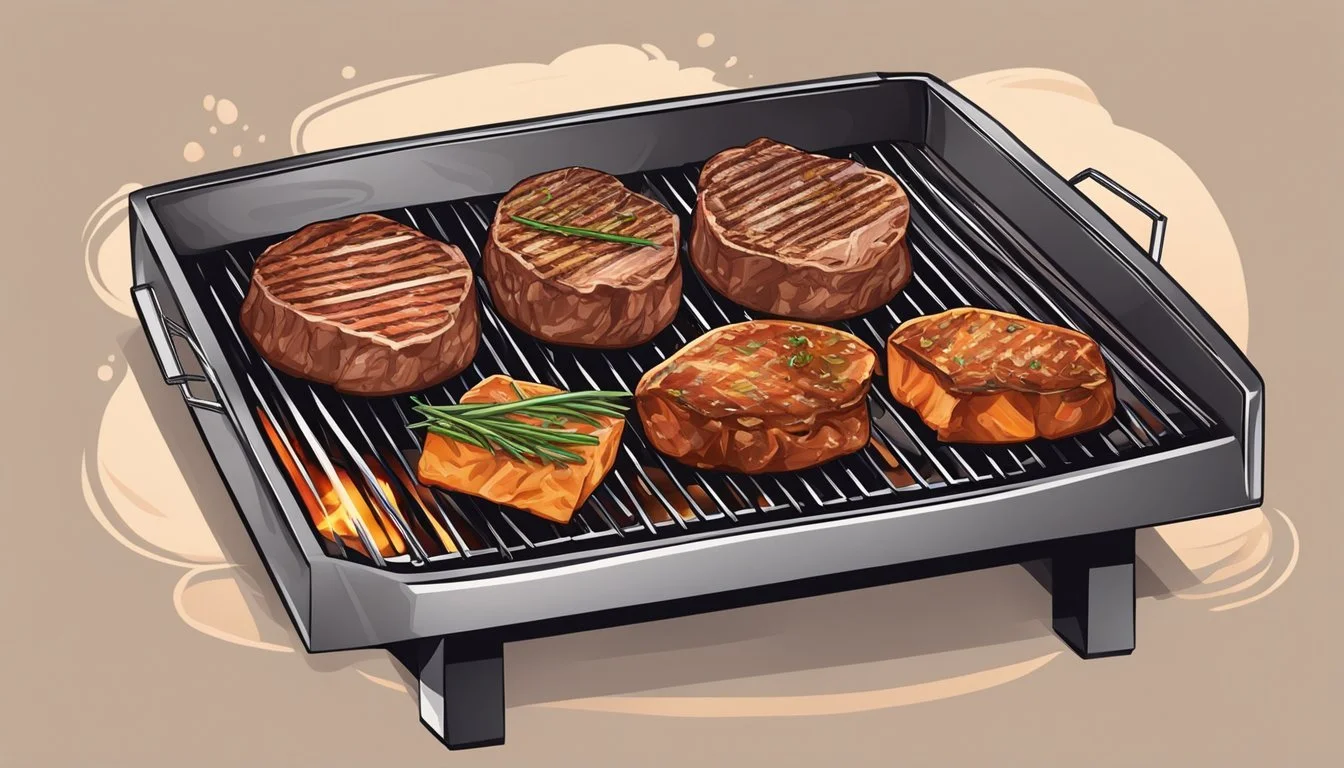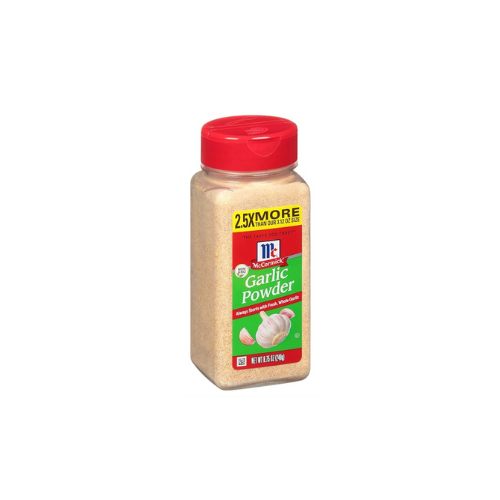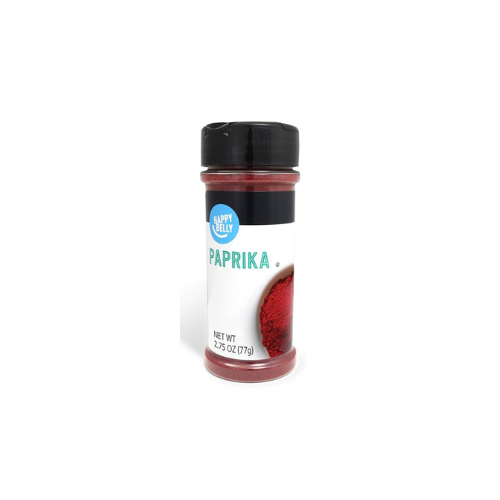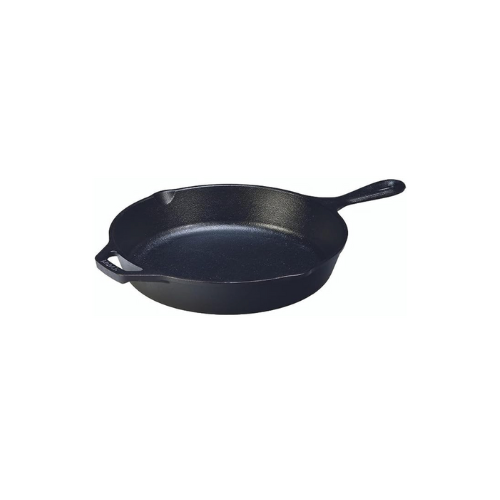How to Grill Meat to Perfection
Carnivore Diet Edition - Mastering the Art of Flame-Cooked Proteins
Grilling meat is both an art and a science, particularly for those on a carnivore diet, where the focus is on consuming animal products exclusively. This restrictive diet emphasizes meat as the primary source of protein and nutrition, satisfying nutritional needs with a range of meats including beef, pork, poultry, and fish. The simplicity of the diet is matched by the straightforward method of grilling, which, when done to perfection, can enhance the flavor and texture of the meat without the need for plant-based additions.
The carnivore diet hails from a belief in returning to ancestral eating patterns, where early humans consumed primarily animal products. Today, individuals following this diet aim for high-quality protein sources that can offer a variety of nutrients. Perfectly grilled meat not only aligns with the dietary requirements but also provides a satisfying culinary experience. The key is in the method — harnessing the right temperature and timing to achieve a caramelized crust without compromising the interior tenderness and juiciness of the meat.
Authentic grilling requires an understanding of different cuts and their respective cooking needs. For example, tenderloin steaks are highly regarded for their tenderness and are best cooked with a high-heat method to seal the juices and flavors. Similarly, selecting the right cooking surface, whether it's a stainless steel, cast iron, or ceramic skillet, impacts the heat distribution and the final outcome of the meat's texture and taste. Grilling meat on a carnivore diet is not just about meeting dietary restrictions; it's about mastering the techniques that bring out the best in each cut of meat.
Understanding the Carnivore Diet
The Carnivore Diet focuses solely on animal products and eliminates plant-based foods, emphasizing a high intake of protein and fat, and aiming for simplicity in dietary choices.
Principles and Benefits
The Carnivore Diet is based on the premise that human dietary needs can be wholly fulfilled by consuming strictly animal products. Proteins and fats from meats, eggs, and select dairy products comprise the core of nutrition on this diet. Proponents argue that this diet offers multiple benefits including increased energy levels, improved digestion, and a simplification of the eating process by removing the need to balance numerous food groups.
Impact on Health and Digestion
When considering digestive health, a diet high in animal products may lead to changes in digestive efficiency. While some individuals report improved digestion due to the reduced complexity of the foods consumed, others may experience health problems if their nutritional needs are not appropriately met or if they have pre-existing conditions that require a varied diet. It is crucial to address potential nutrient deficiencies and consult with a healthcare provider to navigate the diet's impact on health.
Choosing the Right Meat
When applying the Carnivore Diet to one's eating habits, selection of meat is pivotal. Criteria include:
Quality: Opt for grass-fed, organic meats where possible.
Variety: Include different types (beef, pork, poultry, fish) to meet nutritional needs.
Preparation: Preference for grilling or cooking methods that preserve nutritional value.
Grilling meats should aim at achieving the right internal temperature for safety while also considering personal preference for doneness.
Selecting Quality Meats
Choosing the right meats for grilling is crucial for anyone following a carnivore diet. The selection process should focus on the quality and source of the meat to ensure both health benefits and the best taste.
Beef and Steak Selection
When selecting beef, look for steaks with vivid red coloring and marbling. Marbling refers to thin veins of intramuscular fat throughout the meat, which enhances flavor and tenderness upon cooking. The tenderloin steak holds top marks for grilling due to its delicate texture. For those who prefer richer flavors, ribeye steak (What wine goes well with ribeye steak?) makes an excellent choice. Grass-fed options tend to provide higher levels of omega-3 fatty acids and are recommended.
Poultry and Chicken Choices
For poultry, chicken thighs (What wine goes well with chicken thighs?) are an ideal selection as they are more flavorful and moist than chicken breasts, making them more forgiving on the grill. Pasture-raised chicken is generally preferred due to its healthier profile, which includes less saturated fat and more omega-3s than conventionally raised chickens. Additionally, consider trying other poultry varieties like turkey or duck for diversity.
Pork and Lamb Considerations
In the realm of pork and lamb, opting for pasture-raised meat is again beneficial. For pork, cuts like chops and tenderloins are optimal for grilling. With lamb, lamb chops (What wine goes well with lamb chops?) are the go-to choice due to their tenderness and easy-to-manage portion size. The natural flavor of the meat is rich, and minimal seasoning is required for a delicious outcome.
Seafood Options
Seafood provides a lighter alternative within the carnivore diet, with options like salmon being high in omega-3 fatty acids. When selecting fish, look for freshness signs such as clear eyes, clean smell, and moist skin. Wild-caught species usually offer superior taste and nutritional profile compared to farmed counterparts.
Understanding Meat Labels
Navigating meat labels is essential to making informed choices. Labels such as "grass-finished" or "pasture-raised" indicate animals that were raised in natural grazing environments, which can affect the nutritional content of the meat. Labels claiming no added hormones or antibiotics should also influence the selection process, ensuring that the meat is as natural as possible.
Essential Grilling Techniques
To achieve grilled meat that satisfies the carnivorous palate, attention to detail in preparation and technique is crucial. The following essential grilling methods are designed to elevate the flavor and texture of meats such as beef steaks to new heights.
Preparing Meats for Grilling
Ensures that the meat reaches room temperature before grilling, which promotes even cooking. Pats the meat dry to remove excess moisture, enhancing the crucial searing process. A dash of salt and pepper is applied, which not only seasons the meat but can also help form a desirable crust.
Get the best value for your money by purchasing salt and pepper online!
Mastering the Searing Process
A robust sear creates a delectable crust that encapsulates the meat's natural juices. To achieve this, preheat the grill to a high temperature before placing the meat on the grate. Quickly sear each side, usually for a few minutes, triggering the Maillard reaction that delivers savory complexity to the meat's surface.
Controlling Heat and Flame
Understanding the grill's heat zones is vital for the cook. Utilized high heat for searing and medium heat to cook the meat through. For charcoal grills, arrange the coals to create direct and indirect heat zones. For gas grills, adjusts the burners accordingly. If flares occur, move the meat to a cooler zone to prevent charring.
Cooking to Preferred Doneness
For precise cooking, rely on a meat thermometer to measure internal temperature, aiming for the desired level of doneness — for example, 130º F for medium-rare, particularly when grilling a choice cut like a ribeye steak. Allow the meat to rest after grilling, letting the juices redistribute for a moist and tender bite.
Take advantage of the wide variety of online options when shopping for a meat thermometer!
Flavor Enhancements and Marinades
When grilling meats, flavor enhancements and marinades play an integral role in maximizing taste while adhering to the carnivore diet’s requirements. Spices, herbs, and carefully chosen marinades can significantly elevate the natural flavors of meat.
Using Spices and Herbs
Utilizing spices and herbs is a simple yet effective way to amplify the flavor of grilled meats (What wine goes well with grilled meats?) without adding carbohydrates or sugars that are restricted on the carnivore diet. A well-known combination is salt and pepper, which can be used liberally to enhance the meat's natural flavor. Additionally, incorporating garlic into the rub adds a robust profile. Spices like cayenne or paprika provide a kick that livens up each bite.
Recommended spices and herbs include:
Salt
Black Pepper
Garlic Powder
Cayenne Pepper
Paprika
Enjoy the convenience of doorstep delivery when you buy garlic powder, cayenne pepper, and paprika online!
Homemade and Pre-made Marinades
Marinades serve as an excellent method for infusing meats with complex flavors. For those adhering to the carnivore diet, homemade marinades have the advantage of controlling all ingredients, ensuring no unwanted sugars or additives compromise the dietary constraints. A simple marinade can consist of melted butter mixed with spices like garlic or black pepper.
Basic marinade recipe:
1/4 cup of melted butter
1 Tbsp garlic powder
1 tsp black pepper
To utilize pre-made options, select additive-free marinades such as those limited to vinegars, lemon juice, or fermented sauces like fish sauce, ensuring they contain no sugar or vegetable oils.
Butter Basting and Glazes
For additional moisture and richness, butter basting is a technique that involves spooning melted butter over the meat as it grills. This not only adds flavor but also helps in achieving a golden-brown finish. The carnivore diet approves the use of butter due to its high fat and zero carb content, making it an ideal choice for glazes as well.
Butter basting technique:
Periodically spoon melted butter over the meat while it cooks.
Consider infusing the melted butter with garlic or herbs for an enhanced flavor profile.
Complementary Foods and Alternatives
Incorporating a variety of foods within the boundaries of a carnivore diet not only enhances flavor but can also ensure a more complete nutritional profile. Properly pairing and selecting types of foods can cater to personal taste preferences while meeting one's dietary and nutritional needs.
Eggs and Dairy Pairings
Eggs and dairy are excellent sources of protein and can complement a carnivore diet, providing essential vitamins and fats. Eggs are versatile and can be prepared in numerous ways, such as boiled, scrambled, or poached. Dairy, including hard cheeses, butter, and heavy cream, can enrich the diet with calcium and fat-soluble vitamins, but should be consumed in moderation to suit individual health goals and lactose tolerance.
Organ Meats and Nutrient Density
Organ meats, particularly liver, are nutrient powerhouses that supply a concentrated dose of essential nutrients like Vitamin A, iron, and B vitamins. Integrating organ meats into one's diet can help fulfill nutritional requirements which muscle meats alone might not provide.
Liver: Rich in Vitamin A, iron, and B12
Heart: Packed with CoQ10 and B vitamins
Kidneys: Good source of selenium and B vitamins
Consulting a healthcare professional or a registered dietitian is recommended to balance the intake of organ meats, maintain nutrient density, and tailor the diet to one's individual health needs.
Plant Foods in a Carnivore Diet?
Strictly speaking, a carnivore diet typically excludes plant foods. However, some individuals may choose to include small amounts of plant-based seasonings for variety without compromising the diet's principles. Considering nutritional needs and personal health goals is critical, and for some, a discussion with a registered dietitian can clarify whether any plant foods can play a role in their dietary regimen.
Meal Planning and Budgeting
Effective meal planning for a carnivore diet is essential for both nutrition and cost management. It ensures individuals consume a variety of meats while adhering to their budget constraints.
Budget-Friendly Meat Purchasing
To optimize savings, one should focus on buying in bulk and choosing less expensive cuts. The carnivore diet allows for a wide range of meat choices; however, costs can add up. For beef steak, consider purchasing chuck or sirloin instead of ribeye. Ground beef is a versatile and affordable option, perfect for making homemade patties. Bulk purchases of ham, turkey, or pork belly (What wine goes well with pork belly?)can also provide variety without breaking the bank. When available, buy short ribs or other meat on sale and freeze for later use.
Buying in Bulk:
Beef steak: Chuck, Sirloin
Ground beef: For patties
Pork belly
Short ribs
Sample Prices:
Ground beef: $3 - $5
Chuck steak: $5 - $7
Sirloin: $7 - $10
Pork belly: $3 - $6
Organizing Weekly Meal Preps
A successful carnivore diet relies on weekly meal prepping to maintain both dietary focus and budget discipline. For example, one may roast a large cut of meat at the beginning of the week, such as a turkey or a ham, then utilize it in various recipes throughout the week. Users can create a schedule of meals, incorporating variety like alternating between beef steak and ground beef patties, or eating pork belly in the beginning of the week and finishing with short ribs towards the end. This ensures they do not tire of any one type of meat and maintain excitement for their meals.
Weekly Meal Prep Schedule:
Monday
Meal: Ground Beef Patties
Tuesday
Meal: Turkey
Wednesday
Meal: Beef Steak
Thursday
Meal: Pork Belly
Friday
Meal: Leftovers/Variety
Saturday
Meal: Short Ribs
Sunday
Meal: Prep for Following Week
By approaching the carnivore diet with strategic purchasing and meal prepping, individuals can enjoy a diverse range of meats without overspending.
Health and Safety Considerations
Grilling meat requires mindful practices to ensure both safety and health. Adherence to proper handling and storage, maintaining safe cooking temperatures, and averting cross-contamination are paramount to enjoy the carnivore diet without compromising well-being.
Handling and Storage
One should always store meat at safe temperatures to prevent the growth of bacteria which can lead to foodborne illnesses. Meat should be refrigerated or frozen immediately after purchase. The ideal refrigerator temperature is at or below 40°F (4°C), while frozen meats should be kept at 0°F (-18°C). Nutrition and food safety experts agree that meat should not be left at room temperature for more than two hours, or one hour if the temperature is above 90°F (32°C).
Cooking to Safe Temperatures
Cooking meat to proper internal temperatures is critical to eliminate harmful bacteria. The Centers for Disease Control and Prevention (CDC) recommends the following guideline for minimum internal temperatures:
Beef, pork, lamb, and veal (steaks and roasts): 145°F (63°C) with a 3-minute rest
Fish: 145°F (63°C) or until opaque and separates easily with a fork
Ground meats: 160°F (71°C)
Poultry: 165°F (74°C)
Using a meat thermometer to check these temperatures helps ensure that harmful bacteria are destroyed without relying on color or texture alone.
Avoiding Cross-Contamination
Cross-contamination occurs when bacteria from raw meat transfer to other foods, surfaces, or utensils. One should use separate cutting boards and knives for raw meat and ready-to-eat foods. Furthermore, it’s important to wash hands with water and soap before and after handling raw meat. Utensils, cutting boards, and surfaces should be thoroughly cleaned with hot, soapy water after they have been in contact with raw meat.
Incorporating these health and safety practices protects digestive health and helps to sustain energy levels and weight loss goals touted by the carnivore diet. Healthcare professionals also stress the importance of including enough salt and water intake to ensure proper stomach acid balance and overall nutrition.
Advanced Cooking Methods Beyond Grilling
While grilling meat is a popular method on the carnivore diet, other cooking techniques offer unique flavors and textures. They utilize controlled temperatures and cooking times to achieve desired results in meat preparation.
Oven Roasting and Baking
Oven roasting involves cooking meat at high temperatures, typically between 300°F and 450°F. This method relies on dry heat to cook the meat evenly, resulting in a flavorful crust with a tender inside. Baking is similar but usually at lower temperatures, making it suitable for cuts of meat that benefit from slower cooking.
Stovetop Skillet Cooking
Skillet cooking on the stovetop is versatile, allowing for several methods like pan-frying or searing. For pan-frying, one may use a cast iron frying pan and a small amount of animal fat, like tallow, to achieve a golden-brown crust. The goal is to cook the meat over medium-high heat until achieving the desired level of doneness.
Online shopping for skillet and tallow is the smart choice for a seamless transaction!
Slow Cooking and Braising
Slow cooking utilizes lower temperatures over an extended period, which can be done in an oven or in a slow cooker. Braising involves first searing meat at a high temperature and then cooking it covered in a flavorful liquid at a lower temperature. Stewing is a similar process but typically involves smaller, consistent-sized pieces of meat. Both methods tenderize tougher cuts and infuse the meat with moisture and flavor.
Carnivore Diet for Beginners
The Carnivore Diet is a high-protein, animal-product-focused eating plan that eliminates plant-based foods. Beginners may find it straightforward, but adherence and adjustment take dedication and strategy.
Starting Your Carnivore Journey
To begin the Carnivore Diet, newcomers should focus exclusively on animal products like meats, fish, eggs, and certain dairy items while avoiding all plant-based foods. This change in diet requires understanding nutritional needs, with an emphasis on obtaining all necessary macronutrients - protein and fats - since carbohydrates are limited. Planning meals around these requirements helps maintain energy levels without traditional carb sources.
Initial Steps:
Eliminate: Gradually reduce and then eliminate plant-based foods from your diet.
Stock Up: Ensure a variety of meats and permissible animal products are available.
Learn: Familiarize yourself with cooking and meal planning centered around meat.
Dealing with Early Challenges
Beginners often encounter initial challenges with digestion and nutrient adjustment, as the body shifts from a varied diet to one that is strictly carnivorous. It is common to experience changes in bowel movements and to feel fluctuations in energy levels as the body adapts to running on fat and protein instead of glucose from carbohydrates. During this period, it’s crucial to listen to your body and consider adding bone broth to aid digestion and provide nutrients. Hydration should be a top priority as well.
Adjustments to Consider:
Electrolytes: Maintain a balance of sodium, magnesium, and potassium.
Hydration: Drink plenty of water to support digestive changes and overall health.
Variety: Include different types of meats, including fatty cuts for satiety and organ meats for nutritional density.
Tracking Progress and Adjustments
Monitoring one's progress on the Carnivore Diet is important to ensure that nutritional needs are met and any health problems are addressed. A journal or app can be helpful for recording food intake, energy levels, and any bodily changes. Adjustments to macronutrient ratios, types of animal products consumed, and meal frequency might be necessary for optimized personal well-being and goal attainment. Additionally, tuning into how one feels on this diet can give good indicators of whether it suits their individual needs.
Metrics to Monitor:
Energy Levels: Be attuned to changes in daily vitality and endurance.
Digestive Comfort: Keep a log of gastrointestinal regularity and comfort.
Health Markers: Watch for any positive or negative changes in health markers such as blood pressure, cholesterol levels, and weight.
Carnivore Diet and Lifestyle
The Carnivore Diet entails an all-meat regimen, with individuals reporting various benefits such as weight loss and improved energy levels. Adopting this diet influences daily activities, necessitates long-term adaptations, and benefits from strong support networks.
Integrating Diet with Daily Activities
One embarks on the Carnivore Diet, daily routines become oriented around the consumption of meat. Meals are simplified, focusing on high-quality animal proteins that are believed to improve digestion and reduce inflammation. Individuals must plan their activities to accommodate the preparation of meat-based meals, ensuring that their energy levels remain consistent throughout the day. Such a diet may require consultation with a healthcare professional, especially for those with existing health problems.
Long-Term Commitment and Adaptation
Longevity on the Carnivore Diet requires a steadfast commitment and an adaptive mindset. Initially, the body undergoes a significant shift in nutrient sources which can affect energy and digestion. Over time, the body adapts to derive its nutrition solely from animal sources. Individuals may notice changes in their health that should be monitored by healthcare professionals to ensure any risks are managed effectively.
Community and Support Networks
Adherents of the Carnivore Diet often find motivation and guidance in community and support networks. Here, they can share:
Recipes: Exchanging methods for grilling and preparing meats to keep the diet diverse and enjoyable.
Experiences: Discussing the impact on weight loss, health issues, and overall well-being.
Advice: Gleaning insights from more experienced individuals on overcoming challenges and optimizing nutrition.
Support: Encouraging each other to maintain the diet, stay accountable, and track progress with health goals.
These networks play a crucial role in sustaining the lifestyle, offering support from those who understand the intricacies of this diet's impact on everyday life.















